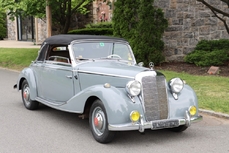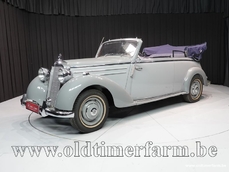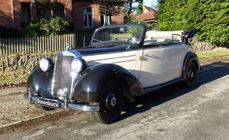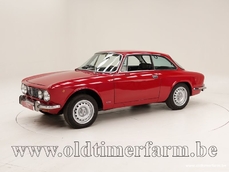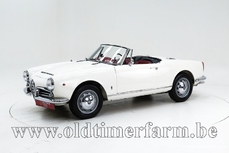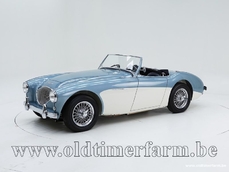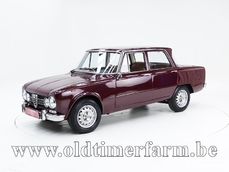Mercedes-Benz 170S DS '52 1952
General description :
Fully restored to mint condition Predecessor of the Mercedes-Benz E Class Engine converted from (DS) diesel to (S) gasoline The Mercedes 170 is a before and after war car of which three variants were made. It had to fill the gap in Mercedes' luxury segment for twenty-four years. The car was released in 1931 and was built in three versions, a saloon, a convertible, and a diesel version, which was groundbreaking for consumer cars. Production ended in 1955, and the successor was already in place, the W120 and W121. In 1931, the first 170 model was introduced and named the W15. It was a luxurious passenger car that was equipped with hydraulic brakes, which was new at the time. In 1934, the second model in this 170 series was released. It had a rounder design, without being aerodynamic as this was not a thing yet. The typical early-1930s look was left behind. In 1937, the W136 was introduced at the Berlin Motor Show. The W136 is the 170 model that will be in production for the longest time and will deliver the largest share of 170 models in various variants. The difference between the previous version was the power, the gearbox that now had four gears, and the solid rear axle was replaced by independent suspension. The W136 was equipped with a 1.7L or 1.8L four-cylinder engine with side valves that delivered 38 hp. Over the years, eight variants were designed, including a diesel engine variant. Which is remarkable as passenger cars, at that time, were only driven by gasoline. A convertible was also brought to the market. The production ended in 1955 and approx. 230,000 W136 models were made in total. It can be regarded as the predecessor of the E-Class as we know it today. Mercedes 170 DS The Mercedes 170 DS was built for two years, from 1952 to 1953. DS stands for 'Diesel Sonderausführung', which is German for 'special diesel version'. Despite the name suggesting that this car is equipped with a diesel engine, it runs on gasoline, making it even more special. The 170 DS is equipped with a 1.8-liter gasoline engine that produces 45 horsepower and a 4-speed manual gearbox. The interior is luxurious in a 1950s style, a classy wooden dashboard and seats offering a level of comfort that no modern car can match. This comfort is also projected in the exterior design, with the elegant bodywork featuring impressive fenders that are inseparable from the charming wheel covers and the playful design. This car exudes prestige. For that reason and the fact that it serves as a precursor to the E-Class, it is a unique classic car that every collector covets. Mechanics. Displacement : straight-four 1767 cc/108 cu in, front-mounted Valve gear : 8 Fuel system : 1 Solex carburettor Gearbox : 4-speed manual Drive wheels : rear-wheel drive Left hand drive Maximum power : 51 hp/38 kW at 4000 rpm Maximum torque : 112 Nm at 1800 rpm Maximum speed : 120 km/h/77 mph
http://www.oldtimerfarm.be/en/collection-cars-for-sale/6648/mercedes-benz-170-ds-52.php
1952 Mercedes-Benz 170S DS '52 is listed sold on ClassicDigest in Aalter by Oldtimerfarm Dealer for €49950.
Car Facts
Car type : Car Make : Mercedes-Benz Model : 170S Model Version : DS '52 Engine size : 0.0 Model Year : 1952 Location : Aalter
Sold
Seller Information
Sold
People who viewed this Mercedes-Benz 170S also viewed similar Mercedes-Benz listed at ClassicDigest
Other cars listed for sale by this dealer
About Mercedes-Benz
In the annals of automotive history, the journey of Mercedes-Benz is a tale that unfolds with the ingenuity of its founding pioneers. In the year 1886, Karl Benz crafted the Benz Patent Motorwagen, a creation that would go down in history as the world's inaugural automobile. Unbeknownst to him, this moment marked the genesis of what would evolve into the most illustrious premium car manufacturer globally. The financial underpinning of this pioneering venture, interestingly, was provided by Karl Benz's wife, Bertha Benz, demonstrating a remarkable partnership that would set the tone for Mercedes-Benz's legacy.A parallel narrative emerged not far away, as Daimler-Motoren-Gesellschaft, founded by Gottlieb Daimler and Wilhelm Maybach, entered the scene. In 1901, they unveiled their automobile under the now-famous moniker "Mercedes," meaning "godsend" in Spanish. This name was bestowed upon the car at the behest of Emil Jellinek's daughter, the distributor for Daimler-Motoren-Gesellschaft. The wheels of innovation were set in motion.
Fast forward to 1926, a pivotal year that witnessed the merger of Daimler with Benz & Cie., culminating in the birth of Daimler-Benz. The amalgamation saw the adoption of "Mercedes-Benz" as the distinguished trademark for their automobiles, fusing the legacies of two visionary entities into one.
Contrary to perceptions of conservatism, the trajectory of Daimler-Benz unfolds as a chronicle of industry firsts. From the introduction of the honeycomb radiator to the float carburetor, and the pioneering implementation of four-wheel brakes in 1924, Daimler-Benz consistently pushed the boundaries of automotive innovation. The diesel-powered Mercedes-Benz 260 D in 1936 marked the inception of diesel engines in passenger cars. The iconic Mercedes-Benz 300SL Gullwing made history as the first car with direct fuel injection, albeit the Gutbrod's tiny 2-stroke engine can claim precedence.
Safety innovations became a hallmark, with Béla Barényi's patented safety cell design in the "Ponton"-models in 1951, featuring front and rear crumple zones. The W116 450SEL 6.9 saw the introduction of the Anti-Lock Brake system (ABS), another pioneering safety feature. From the first production airbags and beyond, the legacy of "firsts" continued to be etched into the fabric of Daimler-Benz.
Over its centennial journey, Mercedes-Benz has not merely produced cars but has sculpted automotive icons. The SSKL, 710 SSK Trossi Roadster, 770K Grosser, 540K Spezial Roadster, 300SL Gullwing, w100 600 Pullman, w111 280SE 3.5 Flachkühler, w113 230SL Pagoda, w109 300 SEL 6.3, and w201 2.3-16 Cosworth stand testament to the brand's commitment to engineering excellence.
The roaring Silver Arrows, or "Silberpfeile," including the W 25, W 125, W154, W165, and W196, created a legacy of dominance on the racetrack. These machines were not merely cars; they were expressions of precision, speed, and an indomitable spirit that left their competitors in the dust.
As Mercedes-Benz marches into the future, it does so not just as an automaker but as a custodian of a legacy, a torchbearer of innovation, and a beacon of automotive excellence. The road ahead is sure to witness the continued fusion of cutting-edge technology, timeless design, and an unwavering commitment to setting new standards in the world of automobiles.
One luminary figure who left an indelible mark was Béla Barényi, often heralded as the "father of passive safety" for his pioneering work in safety engineering. His patented safety cell design, featuring front and rear crumple zones, became a hallmark of Mercedes-Benz's commitment to occupant safety, setting new standards that reverberated throughout the automotive world.
Moving through the chronicles, the collaborative genius of Wilhelm Maybach, alongside Gottlieb Daimler, laid the foundation for Daimler-Motoren-Gesellschaft. Their innovations not only birthed the first Mercedes but established a culture of relentless pursuit of technological excellence that remains integral to Mercedes-Benz's DNA.
In the post-merger era of 1926, Ferdinand Porsche emerged as a prominent figure within Mercedes-Benz. His work on the Mercedes-Benz S-Type, a supercharged race car, garnered acclaim and set the stage for a legacy that extended far beyond the marque. Porsche's impact would later extend to his eponymous company, but his influence at Mercedes-Benz during those formative years was pivotal.
As the 20th century progressed, the legendary Rudolf Uhlenhaut emerged as a key figure. Uhlenhaut, an accomplished engineer and the driving force behind the iconic Silver Arrows, played a crucial role in Mercedes-Benz's dominance in motorsports. His engineering prowess and attention to detail were instrumental in creating some of the most formidable racing cars of the era.
In the latter half of the century, figures like Bruno Sacco, the head of design at Mercedes-Benz from 1975 to 1999, left an indelible imprint on the brand's aesthetic identity. Sacco's design philosophy, characterized by clean lines and timeless elegance, shaped iconic models like the W126 S-Class and the W201 190E, solidifying Mercedes-Benz's reputation for luxury and sophistication.
The narrative would be incomplete without acknowledging the contributions of engineers like Hans Scherenberg, whose leadership in the 1970s ushered in a new era of technological innovation at Mercedes-Benz. Scherenberg's tenure saw the development of groundbreaking technologies, including the Anti-Lock Brake system (ABS) and the introduction of airbags in production cars.
















